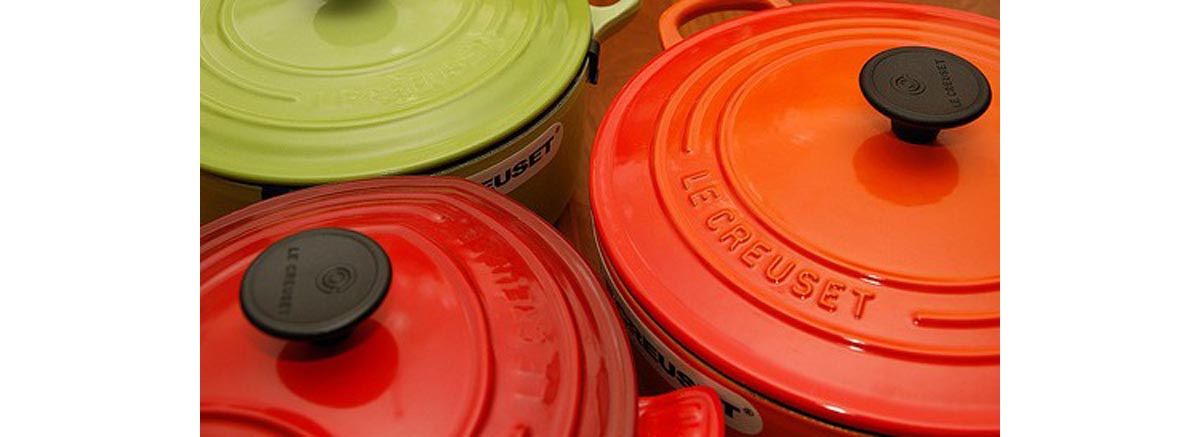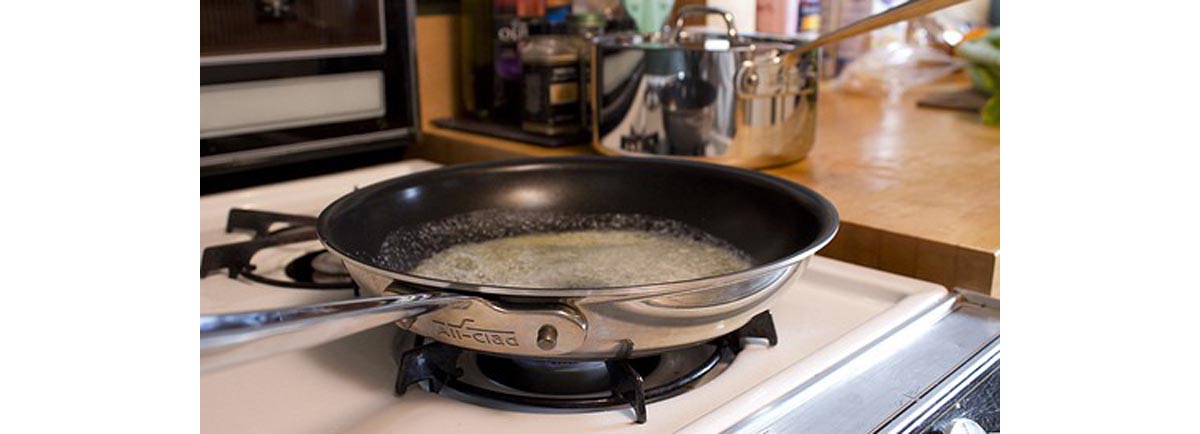Most people have already heard about the possible dangers of using nonstick cookware in the kitchen. Nonstick cookware is made with a whole host of synthetic chemicals that have been undeniably linked to some serious potential health conditions in scientific studies.

PFOA is the main ingredient that is present in nonstick cookware. It is used to create the coating that prevents the food from sticking to the pots and pans during cooking. This coating, called polytetrafluorethylene (PTFE) and commonly referred to as Teflon, is not present on the coating itself.
However, when the coating is exposed to heat, as will happen when you cook, it can create a gas that contains the dangerous chemicals that have led people to be so scared of these pans. The substance is currently listed as a possible human carcinogen; however, the EPA has recommended that it be upgraded to the likely human carcinogen category.
Many of the major Teflon manufacturers have voluntarily committed to eliminating PFOA exposure from their products already, leading to the availability of different and healthier cookware options.
The health risks that are associated with nonstick coating are undeniable. In animals, PFOA has been shown to cause cancer of the testicles, pancreas, mammary and liver in animals. Workers who are routinely exposed to PFOA are at risk of developing and/or dying from pancreatic cancer and cancer of the male reproductive tract.
There are many scientific studies that have proven a link between PFOAs and altered reproductive hormones in men. This can lead to elevated estrogen levels and an imbalance in testosterone levels. There is also evidence that PFOA damages the thyroid gland.
There are newer nonstick pots and pans on the market that are made from PFOA-free and PTFE-free ingredients.
This nonstick cookware is commonly referred to as green nonstick cookware or simply green cookware. The most common line is the Thermolon line. Manufacturers of this new nonstick cookware are claiming that it is the first ever PFOA-free and PRFE-free nonstick cookware that is not only healthy to cook with, but is also good for the environment.
It relies on ceramic-based materials that come from nano nonstick technology. Some top home magazines and celebrity chefs have given this line their personal seal of approval. Before you run out to purchase some ceramic pans, consider that the nanotechnology that is used to create the nonstick cookware is still relatively new, and there are not many research studies available yet. More time will be needed to test for safety and determine if there are any dangers associated with this type of cookware.
Cookware that is not non-stick often requires some additional effort for proper care and maintenance, however, many cooks are willing to put in the extra work in order to have peace of mind regarding food safety. If you make the decision to replace your existing non-stick cookware with one of the safer alternatives listed below, look for a local metal recycling business in your area. Non-stick cookware is in the “dirty aluminum” category, which means they can be recycled and a small fee is often paid by metal recyclers in exchange for your used non-stick items.
Healthy Cookware Options
There are several alternatives to nonstick cookware that are healthy and safe to use in your kitchen. While it may take some time to get over the convenience of nonstick pots and pans, knowing that you are using cookware that is safe for you and your family makes the little bit of effort needed worth the extra work.

Stainless Steel Cookware
Stainless steel pots and pans are one of the most popular types of cookware found in home kitchens today, as well as in commercial kitchens everywhere. Stainless steel cookware is not really made form stainless steel, but is actually a combination of several different metals such as chromium, nickel and molybdenum.
Although these metals do create dangerous chemical gas when heated, they may trickle into foods during the cooking process. The amount that leaches into foods is usually minimal, and not significant enough to cause negative health effects, as long as the cookware remains in good condition and free from dings, pits and scratches. It is a good cookware choice in terms of health, however, it does not conduct heat as evenly as some of the other cookware materials that are available.
Anodized Aluminum
Aluminum conducts heat evenly and is a very effective cooking tool. Unfortunately, there are concerns with its safety in the kitchen as well, because aluminum is very reactive when heated and can leach into foods during the cooking process. This is especially true when cooking acidic foods such as tomato-based soups and sauces. Exposure to aluminum has been linked to the development of serious and chronic health conditions such as Alzheimer’s Disease.
Anodized aluminum is a much safer alternative to regular aluminum. It is a quality cookware that conducts heat extremely well and has no noted undesirable health effects. The original creator of this type of cookware was Caphalon. Although the surface is dark gray like Teflon cookware, its smooth surface does not have the same coated feel as the nonstick pots and pans. Many professional and home cooks prefer anodized aluminum to any other type of cookware because of its non-stick, scratch-resistant, healthy cooking surface.
Cast Iron
Cast iron is a very popular type of cookware. Not only is it considered very safe for cooking, but it is actually believed to have the ability to improve your health, including by acting as a low-key iron supplement. In addition to being one of the most durable and versatile types of cookware with excellent heat distribution qualities, cast iron can also boost iron stores as a result of small amounts of the mineral leeching into foods during cooking.
Heavy cast iron pots and pans are not naturally non-stick, however, when they have been properly seasoned with oils during baking, they create an effective non-stick surface. Because the non-stick surface is derived from natural cooking oils, it contains no toxins or dangerous chemicals. While some cast iron cookware is terribly pricey, once you buy it, you'll be able to enjoy cast iron cookware for the rest of your life. The only downside noted with cast iron is that they are a little bit more difficult to care for, and will require proper cleaning and maintenance.
Ceramic Cookware
If you want to get the heat distributing benefits of cast iron without the hassle of having to season your cookware and use additional care and maintenance, then ceramic cookware may be a good choice. Ceramic cookware is a safe non-stick alternative that has a smooth enamel surface. Although it is not completely non-stick, the enamel coating provides a moderate degree of non-stick surface. Ceramic cookware is dishwasher-safe, making cleanup a breeze.
A final word
While every kind of cookware has its own set of upsides and downsides, ease of use should never be your only consideration. Your health matters, too, and if your frying pan is exposing you to dangerous chemicals on a daily basis, it's time to look for better options!
- Photo courtesy of myhsu on Flickr: www.flickr.com/photos/myhsu/3147727290
- Photo courtesy of dinnerseries on Flickr: www.flickr.com/photos/dinnerseries/8182205058


Your thoughts on this